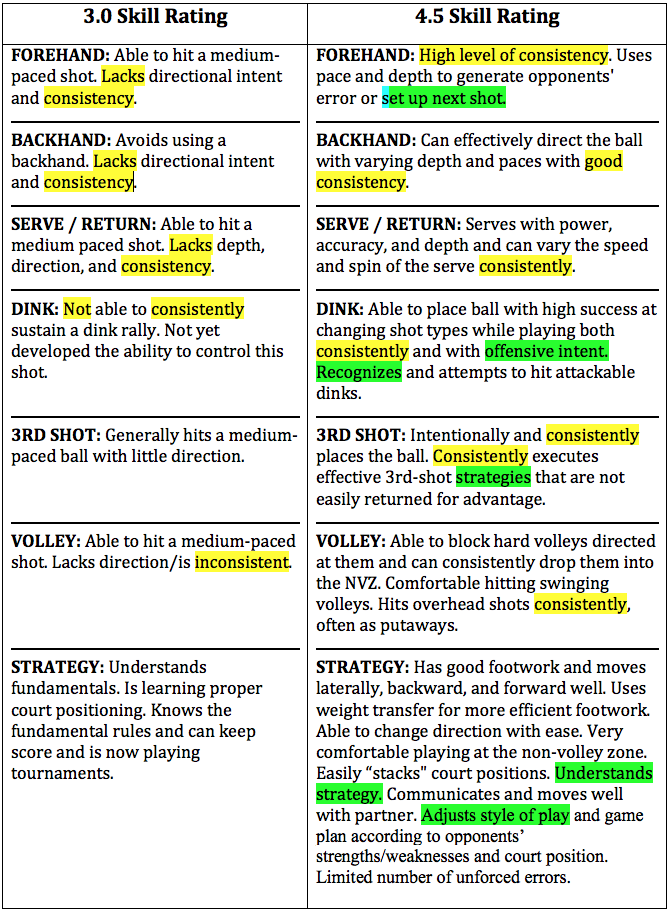 Image from Wikimedia Commons (cropped and filtered). Buzz Lightyear Astro Blasters (2042592753)
Image from Wikimedia Commons (cropped and filtered). Buzz Lightyear Astro Blasters (2042592753) Let's say You haven't been playing pickleball that long and you want to get to be a 4.5 player. What do you need to do? What are the major differences between 3.0 and 4.5?
The table below (info from the USAPA website) lists these definitions:
If you've read my posts before, you know I stress PRACTICE, and not just aimless hitting back and forth over the net. It's important to have a goal—one that's reachable and measured. Like consistently hitting that forehand that sometimes goes out of bounds or into the net.
Get a friend to work with you (or better yet, take classes) and make sure 1) you're doing the stroke correctly before you continue to learn it wrong; 2) concentrate your focus not on everything about that shot but rather small parts of it: hitting it at about the same height and to roughly the same spot on the court.
Once you have mastered that, move the shot to other areas. When that's easy, work on your backhand and do the same thing. All of this takes time, but if you do this practice consistently (couldn't resist putting that in), your game will improve.
Take things slowly and methodically, knowing it took a while to get from novice to 3.0. With patience and some help from your friends, you'll get there.



 RSS Feed
RSS Feed